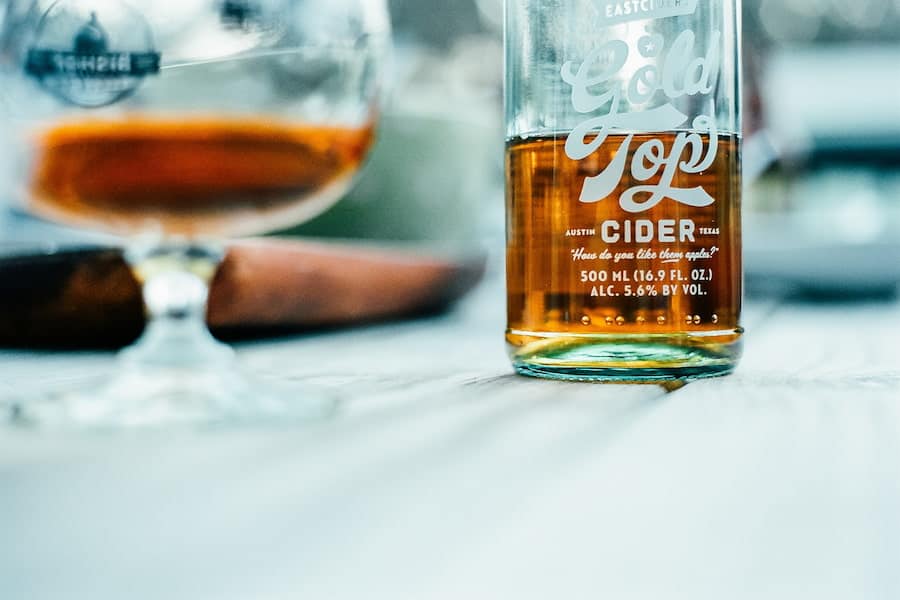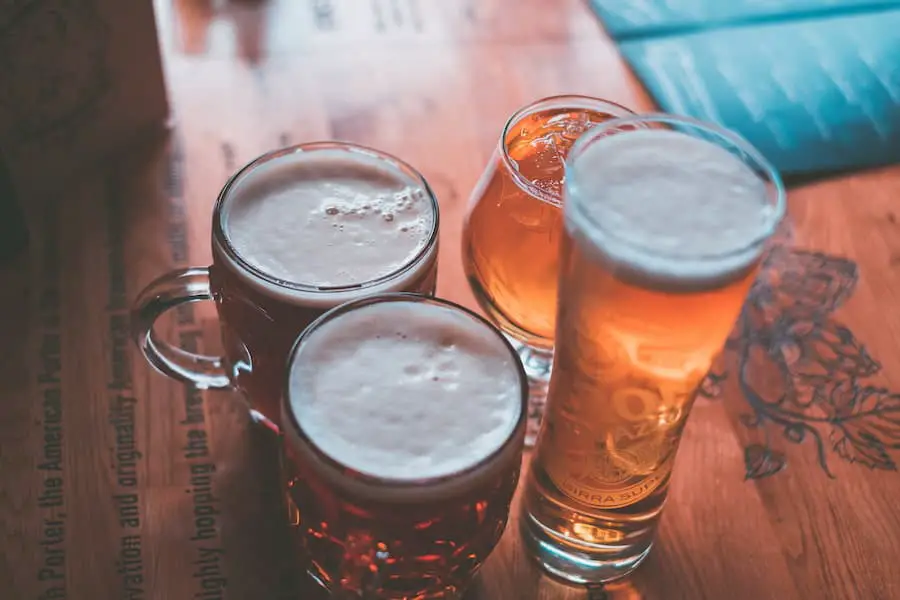If you buy something through a link in our posts, we may get a small share of the sale.
Nothing beats a cold glass of hard cider on a hot day, especially when you brewed it yourself. Making hard cider seems to be a slightly straightforward process. However, knowing how to carbonate hard cider is an area most homebrewers still have questions about.
Here’s all you need to know about how to carbonate hard cider.
Contents
How to Carbonate Hard Cider
Alcohol and carbonation are end results of the activities of yeast in the cider. When yeast comes in contact with sugar, a number of processes begin. These processes upon completion lead to the production of carbon dioxide and alcohol as by-products.

The process of natural carbonation can only add very little amounts of CO2 to your hard cider. To get a hard cider that gives you that fizzy experience, you have to carbonate it using artificial methods. The following are methods through which you can carbonate your hard cider:
Almost Exhausted Carbonation
The Almost Exhausted Carbonation method is mostly used when you want to speed things up or when you don’t want to add more sugar to your cider. It is a method that is not exactly accurate and could be pretty tricky the first few times you try it.
Despite its complexities, however, it is possible to perform it successfully. It requires taking a guess as to how much of the fermentation has occurred and bottling just as the fermentation process is about to end.
Here is a step by step guide to practicing this method:
- Carefully calculate the specific gravity of your brew before and after adding the yeast. The hydrometer helps you to monitor the carbonation level of your hard cider by showing you how much sugar has been consumed by the yeast.
- Right before the fermentation process is complete, that is, while there is still some yeast and sugar in your brew, transfer your brew from the fermenter into bottles.
- Before bottling, ensure that your cider is at or below a specific gravity level of 1.010. If you get the timing and process right, you will have enough yeast left to keep working on the sugar remnants inside the bottle, hence, achieving carbonation.
TIP: I recommend using a hydrometer to monitor the yeast left in the cider in relation to the already expended sugars. Also, ensure that you do not add any more sugar to your brew before bottling as this will make your cider over carbonate. Over carbonation leads to geysers as you open your bottle and in extreme cases, bottle explosions.

Back Carbonation
This method is a more controlled option for carbonating your cider. It is the most common method used by homebrewers. Using this method, you can easily measure the quantity of sugar and yeast left after bottling.
Unlike the Almost Exhausted method, this one requires a longer fermentation period because you have to wait for the yeast to break down all the natural sugar in the cider. This method can be used for brewing beer too.
Here is a step by step guide to practicing this method:
- Wait until all the sugar in your cider -both natural and added- have been consumed by the yeast. It might take as long as 4 weeks for the fermentation to be complete -two weeks for primary fermentation and another two weeks for secondary fermentation. Your cider should taste very dry and may even be bitter at this point.
- Right before bottling, add some more back sugar to your cider for the yeast left to break down while it is inside the bottle. You can add any of the following:
- Brown sugar
- Frozen apple juice concentrate
- Dextrose (corn sugar)
Note that adding excess back sugars to your cider to make it sweeter will only lead to over carbonation. The yeast in your cider will consume any back sugar that you add, therefore preventing it from being sweet. To sweeten your cider, check out the next step.
- In the event that you want a sweet cider, as opposed to a bitter one, add some sugar alcohol/zero-calorie sugar such as Xylitol, which yeast is incapable of breaking down.
- After adding the sugars, proceed to bottle your cider and wait for a couple of weeks for the bottle carbonation to be fully achieved.

Forced Carbonation
This method of carbonation is the method used in carbonating almost all commercial brews, not just cider. It requires you to just inject your completed cider with CO2 bubbles from a tank. This method is safe, fast, measurable, and reliable but it comes with a little bit of expense incurred from getting a good CO2 tank.
Here is a step by step guide to practicing this method:
- Transfer your cider into a plastic bottle, and ensure to leave headspace of a few inches at the top.
- Refrigerate the cider bottle. This is because CO2 is absorbed faster and better in chill liquid.
- Remove the cold cider from the refrigerator and place your CO2 tank on the cap. Make sure to squeeze the bottle to force all air out before injecting the C02.
- Shake the bottle well when the filling is complete, to help the brew absorb the C02. This will create some more space for filling.
- Repeat this process once or twice until the bottle is fully carbonated. When your bottle is fully carbonated, it remains hard no matter how much you shake it.
- Return the bottle to the refrigerator, wait a day, and then force carbonate again. By this time, your bottle should be super hard.
- Transfer your cider to smaller bottles to facilitate easy pouring.
- Drink your cider as it is now ready.
If you would rather not use a CO2 tank, there are several other options on the market that you can use for forced carbonation. There are also a number of forced carbonation techniques that you can apply. They include:
- Keg force carbonation
- Quick force carbonation
- Slow force carbonation

Why Should You Carbonate Your Cider With Sugar?
Carbonating your hard cider using sugar falls under the back carbonation method. This method is favored by most homebrewers because it is a simple and reliable method. I also recommend this method if you are brewing your cider by yourself. Doing the same with beer is advised as well.
The sugar sources for this method are pretty easy to find and they are natural. Back carbonation gives you the power to control the specifics in your cider like the sweetness and how fizzy it is.
Overall, the back carbonation method is way easier than the almost exhausted carbonation method and the forced carbonation method. Firstly, you do not have to go through the struggle of determining the appropriate time to bottle your cider. Secondly, you get to avoid all the hassle that comes with using a CO2 tank and other similar gadgets.
How Long Does It Take Hard Cider to Carbonate?
Typically, back carbonation should take between two to four weeks depending on some factors. These factors include how much additional sugar is in the cider and the temperature at which the bottles are stored. This is similar to beer that takes about two to three weeks.
How Much Sugar Should You Add to Carbonate?
The sugar added to brews, including beer for carbonation before bottling them is referred to as priming sugar. The amount of priming sugar you use will depend on:
- Volume of cider
- CO2 level of the cider before bottling
- Amount of CO2 to be added
- Temperature as at the point of bottling
Conclusion
Carbonating your hard cider can cause tremendous improvements to its aroma and flavor. Feel free to experiment with the carbonation levels of your cider till you are able to get a consistent level of carbonation that suits your preferences.

